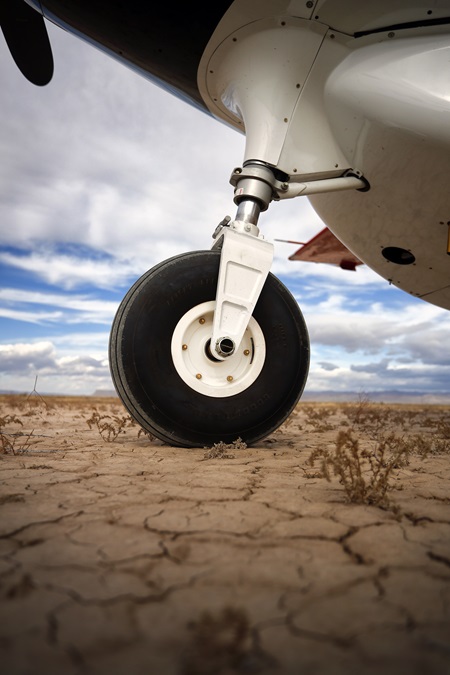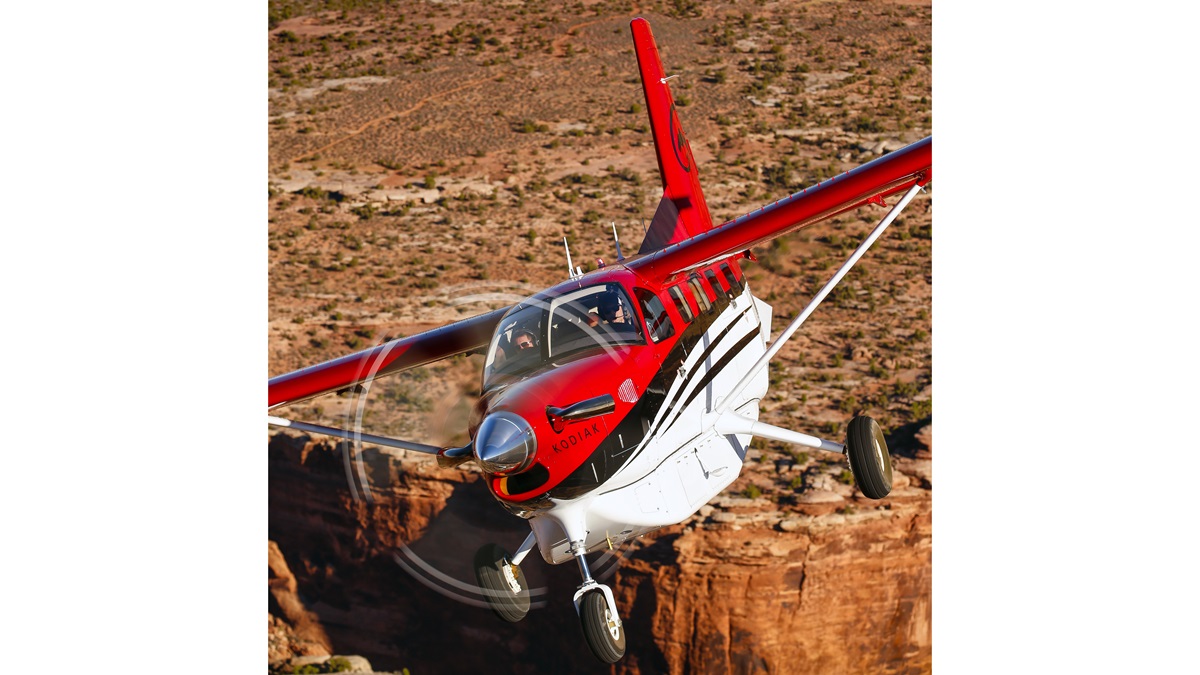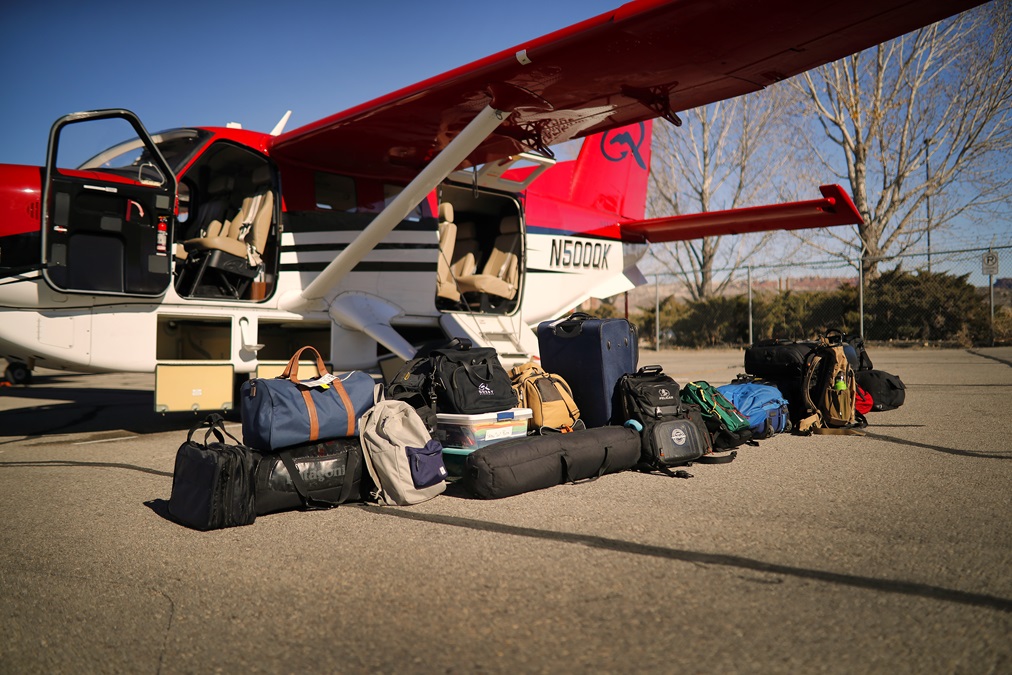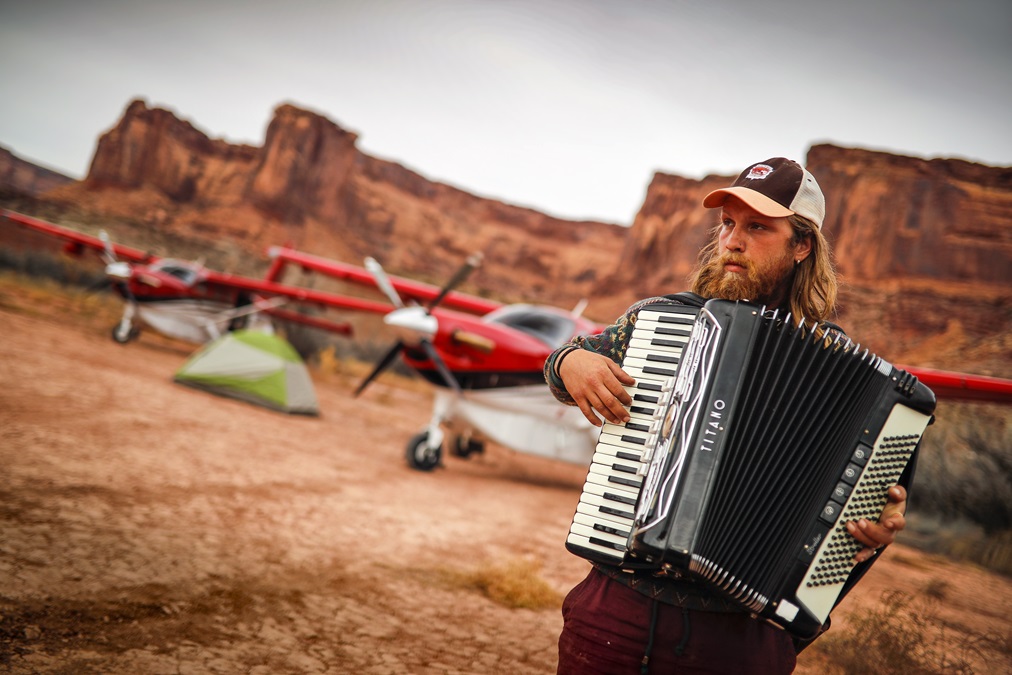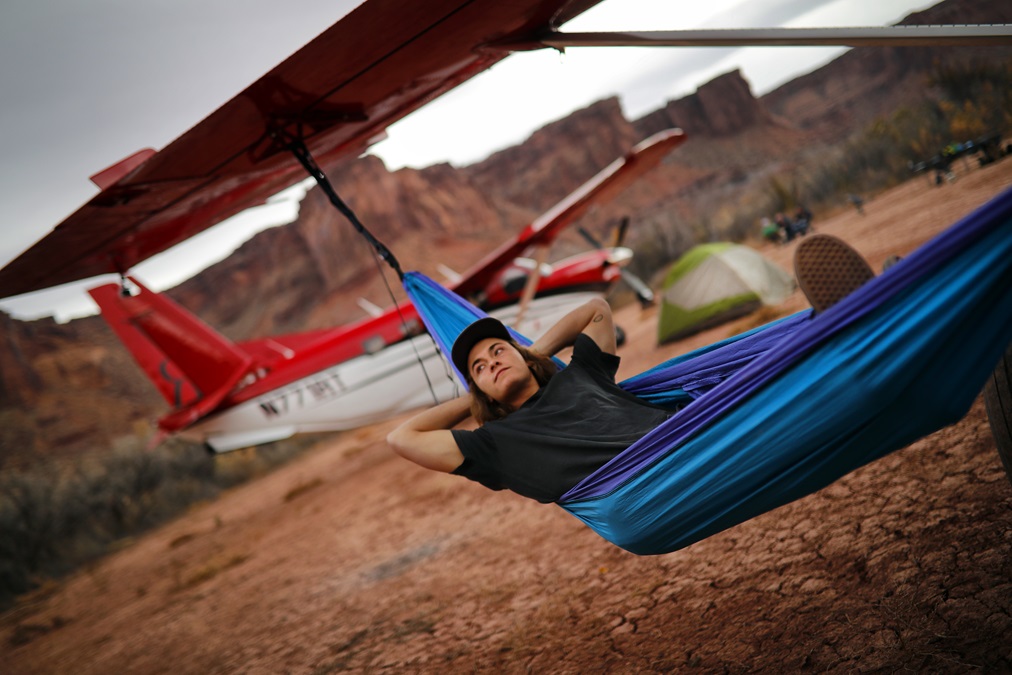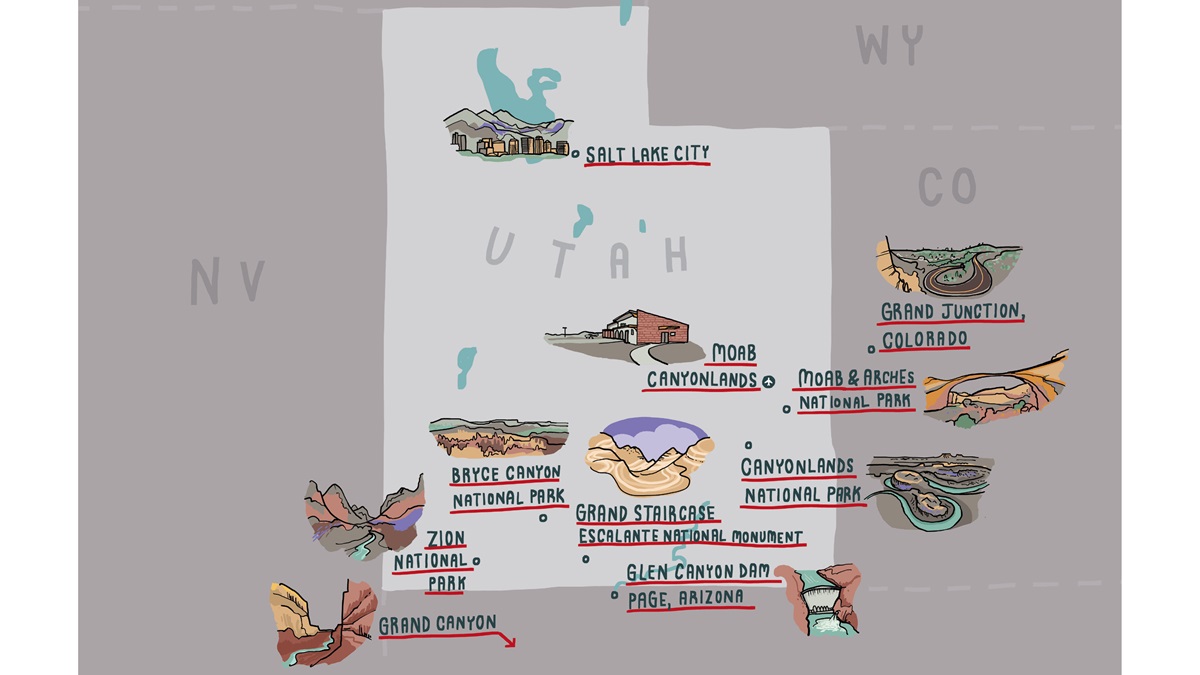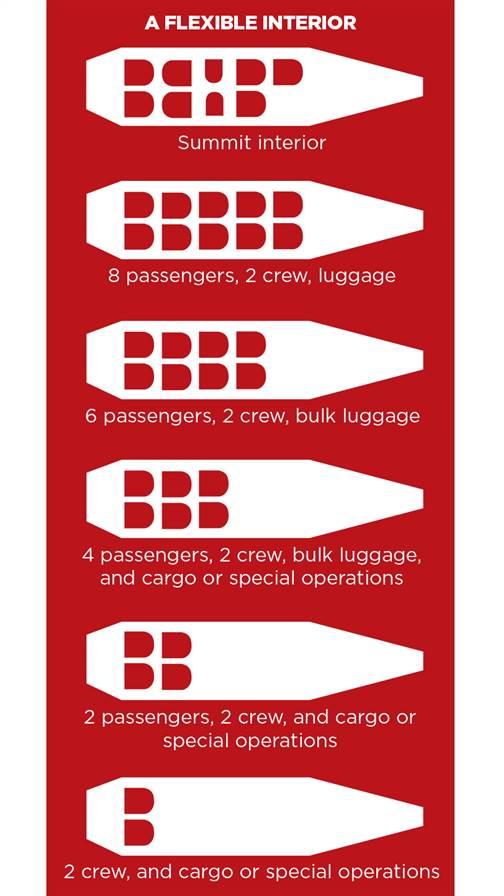Quest for adventure
Exploring Utah’s backcountry in a capable Kodiak
“We’ll slow up. Give him a little time to get off the runway,” he said, concentrating on the twisting river deep in the canyon below. Loitering just above the rim, we had an amazing view of the Canyonlands region of southern Utah—a desert plain of red rock crevassed by ancient canyons and surrounded by stunning peaks. Our 20-minute flight southwest from Moab’s Canyonlands Field went by in a flash as the four of us on board gawked out the Kodiak’s big windows.
Leading the way was a Kodiak flown by Nick Lamoureux, director of flight operations for Redtail Air Adventures. About 90 seconds after Lamoureux disappeared around the bend in the canyon, Brown pushed the Kodiak’s nose over and we descended into the big ditch. The canyon offered maybe two wingspans of clearance on each side. A swooping turn to the left had us entering a slightly wider valley and, just over a hill, the 2,000-foot dirt strip came into view, a cloud of dust settling down as Lamoureux taxied into the shrubs off the left side of the runway. The Green River meandered by the runway a couple of hundred yards to the right.
Brown threw in the last of the flaps and the Kodiak settled in at 80 knots or so as we cleared the hill on short final and soon touched down, rolling to a stop halfway down and then taxied in next to the Redtail Kodiak.
In a “honey-I’m-home” sort of moment, Lamoureux embraced Brian Martinez and Vlad Dandu, two guides who made the four-hour drive from Moab and set up camp for us in this breathtaking crook in the river in the middle of nowhere. Tents, fire pit, washing station, portable toilet, and most importantly a propane grill were up and ready for use. Their big-tired Toyota Land Cruiser and Lexus LX 450 were cleverly packed with all sorts of fresh food and gear, and Martinez was soon searing a massive beef tenderloin sprinkled with fresh herbs. All this and it wasn’t even noon yet.
The guides work for Navtec, an outdoor adventure company that partners with Redtail to offer guests any number of, well, outdoor adventures. The runway, Mineral Canyon, is on Bureau of Land Management property, so it is open for public use. It is maintained by Redtail and the Utah Backcountry Pilots Association as an access point for the Green River. Redtail frequently swoops in with its 207 or Kodiak to drop off or pick up Navtec customers and those from another dozen tour companies who are beginning or ending thrilling raft, canoe, or kayak trips on the river. The 20-minute flight back to Moab beats the 240-minute drive over rutted canyon roads.
Redtail owns two Kodiaks, a Cessna 207, a Waco biplane, and a number of smaller flight school airplanes. “We built our company around recreation,” Lamoureux explained, as he ran down a list of uses for the airplanes—everything from flight instruction to sightseeing to dropping off and picking up hikers and rafters in the remotest canyons. And then, of course, there’s the freight. The 207 makes a nightly UPS run to Salt Lake City and back with packages. During the holiday season, the volume is such that the Kodiaks get put to work as freighters, the flexible interior easily swapped out for cargo space. Among the freight is fresh seafood, often from as far away as Hawaii. “We bring sushi in for probably [a] half dozen restaurants in Moab,” Lamoureux continued. Yes, thanks to general aviation you can get fresh sushi in the middle of the Utah desert.
We poked around the beautiful valley, surrounded by towering red rocks, and wandered over to the river while Martinez and Dandu worked kitchen magic out of the back of the trucks. When we peeked through the brush at the river bank, Brown spied a gravel bar in the middle of the stream. I could see him squinting at the surface, guesstimating the length. Hmmm…could a Kodiak, famed for its short takeoff and landing capabilities, land on that? It’s a question I knew Brown felt needed answering.
Minutes later we fired up the demonstrator Kodiak Brown had flown from the Idaho factory and taxied out as the videographers and photographers we brought with us captured every movement. We barreled down the runway, throwing up a camera-pleasing cloud of dust, and zoomed off, following the river downstream to where the valley widens even farther. With partial flaps deployed, Brown spun the beefy Kodiak around on a wing tip and headed back upstream. The cuffed wing leading edges partnered with vortex generators on the upper wing and tail carefully manage airflow to make the big airplane extremely safe and responsive at very low airspeeds.
We rounded the bend, the gravel bar spread out ahead of us. Brown expertly descended the airplane to just above the surface and skimmed over the top, not quite touching down; we got a good look at the surface, which is a combination of gravel and hard-packed sand. Up we went, climbing above the rim and back around for another go. This time, Brown had the sight picture nailed and touched one wheel down before adding power for a go-around.
“Yeah, we could do it,” he said more to himself than me. Satisfied with the effort and feeling no need to actually risk the airplane by doing a full-stop landing, we swooped back around for an approach to the opposite end of the runway from which we took off on this calm day. We easily made the midfield turnoff into the low brush.
With the big Pratt & Whitney PT6 shut down, the smell of grilled tenderloin drew us back to camp where fresh greens, seared green beans, and all the accompaniments had appeared. Our ragtag team dug into a meal as good as any you’ve had at the finest restaurants in the world. It’s just that here the view was even better—and the silence amazingly relaxing.
Later, with our feet propped up next to the fire, the serene scene became surreal as Dandu broke out his well-worn accordion and began to play. Waltzing around between the airplanes and fire, the sound reverberating off the canyon walls, Dandu serenaded us with songs from his Romanian roots, his captive audience clapping along and enjoying every minute of it. Nowhere else on the planet could a bunch of pilots be sitting in a desert canyon surrounded by airplanes and listening to a talented Romanian play the accordion.
While most airplanes would look out of place sitting on mottled dirt among brush and shrubs, the Kodiaks looked right at home. In fact, the 2,000-foot dirt strip with brush on both ends didn’t even have the heavy haulers sweating. It can take off from just 1,000 feet of runway carrying its maximum takeoff weight of 7,255 pounds and climb away at some 1,300 feet per minute.
Designed for missionary and humanitarian flying in the remotest parts of the world, the model is the only one made by Idaho-based Quest Aircraft. It was designed to replace the aging Cessna 185s and 206s and de Havilland Beavers, all of which are still prowling the planet in support of backcountry operations. But they are increasingly difficult to maintain. And piston engines can be expensive to fuel in the many parts of the world where avgas is nearly impossible to get. The Kodiak’s 700-shaft-horsepower variant of the venerable PT6 turboprop simplifies operations, reduces maintenance, increases reliability, and—although it burns more per hour—actually reduces fuel costs in many places.
The Kodiak’s most direct competitor is the Cessna Caravan. The Kodiak’s wingspan is seven feet narrower and it is about three feet shorter in overall length than the Caravan, giving the Quest airplane a bit more boxy look than the Cessna. The changes were purposeful, given the narrow, confined strips that humanitarian organizations use in many parts of the world. Despite the overall smaller dimensions, the Kodiak’s cabin is taller and the big, square windows ideally placed for sightseeing. With room for up to 10 seats, including crew, the cabin can be configured in any number of ways, including with a club configuration and various combinations of seats and cargo areas.
Although the Caravan has a maximum takeoff weight 745 pounds higher, the Kodiak can carry a greater useful load because of its lower basic empty weight. Cruise speeds are similar, until the cargo pod is attached. The Kodiak’s cargo pod is fairly aerodynamic and extends all the way to the nosegear, reducing drag compared to the Caravan’s squared-off pod. As a result the Kodiak’s cruise speed with the pod can be about 10 knots faster, depending on altitude, according to Brown. The Kodiak also can take off in little more than half the length of the Caravan, and climb away more quickly. Both are equipped with Garmin G1000 avionics systems and are priced similarly.
In our pod-equipped Kodiak, we saw 174 knots true airspeed at 8,500 feet on 392 pounds per hour, about 57 gallons per hour. At 10,500 feet the speed increased to 176 KTAS while fuel burn dropped to 363 pph, or about 53 gph. At slower speeds the range can be stretched to more than 1,100 nautical miles. Maximum endurance can reach seven hours or so, according to Redtail’s Lamoureux, a welcome number for those around the world who use the airplane for surveillance and special missions. In its short life—first certified in 2007—the Kodiak has found a dizzying array of missions. A skydiving package was approved the next year; amphibious float certification followed a couple of years later. Today, the airplane is used in special missions, skydiving, sightseeing, freight, missionary and humanitarian flights, border patrol, poacher patrol, scheduled passenger service, charters, and emergency airlifts in everywhere from remotest Ecuador to Hiroshima, Japan.
A variety of interiors dress it up or down, depending on mission, with the Summit package offering business-jet-like amenities and comfort—a popular one for those using the airplane personally. While only about 40 percent of the 220 or so delivered are personally owned on a global basis, in the United States that number is closer to 80 percent, according to Brown.
While beefy looking, the airplane is a pleasure to fly. It predictably feels heavy, but is well balanced and stays put, yet feels responsive to even subtle control inputs. The Garmin GFC 700 autopilot flies the airplane beautifully—a real aid in single-pilot situations, which is the norm for many of its missions. An auto trim system helpfully offsets pitch changes with flap inputs. Lowering flaps, for example, causes the system to automatically roll in nose-down trim, keeping the nose from pitching up.
Landings are like a Cessna 182 or 206 in feel and speed. During one of our landings at Canyonlands Field, Brown crossed the approach threshold of the 7,100-foot runway at 500 feet above ground level before pitching over for a slow, windshield-filling descent and still stopping before the midpoint of the runway.
But, hey, who needs a runway? Later we made numerous takeoffs and landings on the salt flats northwest of the airport, our performance judged by a herd of curious cows.
With its configurable cabin, landing gear choices, and cargo pod option, it’s hard to imagine a more versatile airplane—and one more suited to doing what general aviation does best, exploring the nooks and crannies of the world and giving pilots the sorts of experiences that others only imagine.
Email thomas.haines@aopa.org


